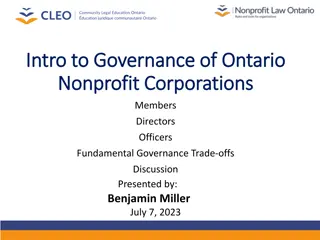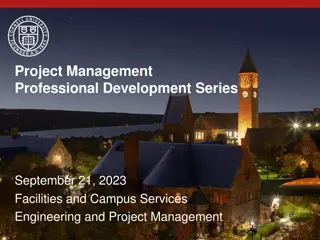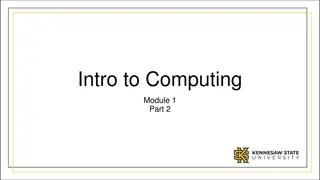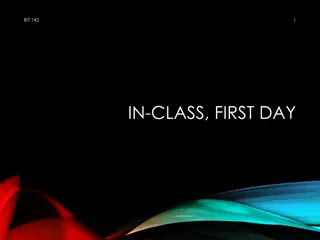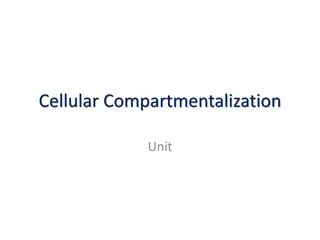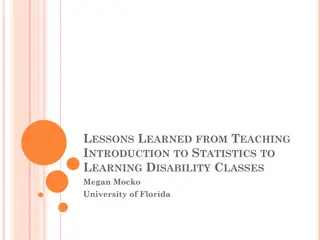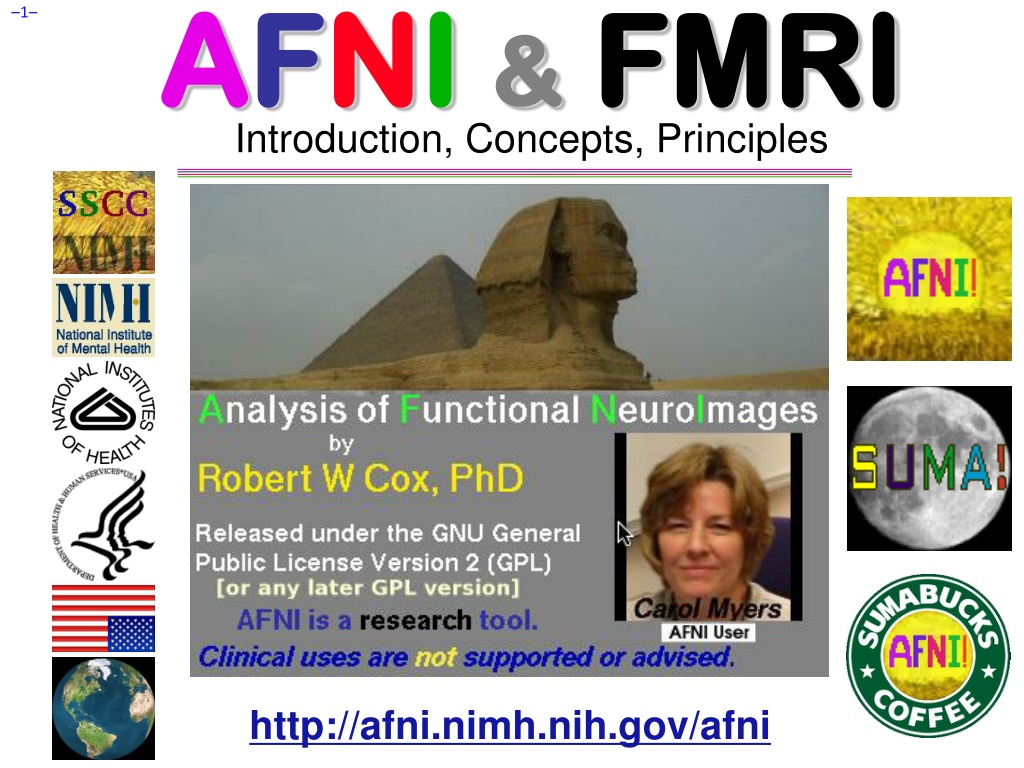
Understanding Functional MRI Principles and Concepts
Explore the principles and concepts of functional MRI (fMRI) through an in-depth look at AFNI software, its development, and the important principles guiding fMRI analysis. Discover the basics of fMRI, the significance of bug fixes, user support, and the tools available for pre-processing and analysis in the world of functional neuroimaging.
Download Presentation

Please find below an Image/Link to download the presentation.
The content on the website is provided AS IS for your information and personal use only. It may not be sold, licensed, or shared on other websites without obtaining consent from the author. If you encounter any issues during the download, it is possible that the publisher has removed the file from their server.
You are allowed to download the files provided on this website for personal or commercial use, subject to the condition that they are used lawfully. All files are the property of their respective owners.
The content on the website is provided AS IS for your information and personal use only. It may not be sold, licensed, or shared on other websites without obtaining consent from the author.
E N D
Presentation Transcript
A AF FN NI I & & FMRI Introduction, Concepts, Principles FMRI 1 http://afni.nimh.nih.gov/afni
2 A AF FN NI I = Analysis of Functional NeuroImages Developed to provide an environment for FMRI data analyses And a platform for development of new software AFNI refers to both the program of that name and the entire package of external programs and plugins (more than 200) Important principles in the development of AFNI: Allow user to stay close to the data and view it in many different ways Give users the power to assemble pieces in different ways to make customized analyses o With great power comes great responsibility to understand the analyses and the tools Provide mechanism, not policy Allow other programmers to add features that can interact with the rest of the package
3 Principles (and Caveats) We* * Live By Fix significant bugs as soon as possible But, we define significant Nothing is secret or hidden (AFNI is open source) But, possibly not very well documented or advertised Release early and often All users are beta-testers for life Help the user (message board; consulting with NIH users) Until our patience expires Try to anticipate users future needs What we think you will need may not be what you actually end up needing * *
4 Before We Really Start AFNI has many programs and they have many options Assembling the programs to do something useful and good seems confusing (OK, isconfusing) when you start To help overcome this problem, we have super-scripts that carry out important tasks Each script runs multiple AFNI programs We recommend using these as the basis for FMRI work o When you need help, it will make things simpler for us and for you if you are using these scripts afni_proc.py= Single subject FMRI pre-processing and time series analysis for functional activation uber_subject.py = GUI for afni_proc.py align_epi_anat.py = Image alignment (registration), including anatomical-EPI, anatomical-anatomical, EPI-EPI, and alignment to atlas space (Talairach/MNI)
17 A What is Functional MRI? 1991: Discovery that MRI-measurable signal increases a few % locally in the brain subsequent to increases in neuronal activity (Kwong, et al.) Signal increase caused by change in H2O surroundings: more oxygenated hemoglobin is present Cartoon of MRI signal in a single activated brain voxel with no noise! D: 4-5 s rise E: 5 s plateau Contrast through time G: Return to baseline (or undershoot) A: Pre-activation baseline C: 2 s delay time B: 5 s neural activity F: 4-6 s fall
18 How FMRI Experiments Are Done Alternate subject s neural state between 2 (or more) conditions using sensory stimuli, tasks to perform, ... Can only measure relative signals, so must look for changes in the signal between the conditions Acquire MR images repeatedly during this process Search for voxels whose NMR signal time series (up-and- down) matches the stimulus time series pattern (on-and-off) FMRI data analysis is basically pattern matching in time Signal changes due to neural activity are small Need 500 or so images in time series (in each slice) takes 30 min or so to get reliable activation maps Usually break image acquisition into shorter runs to give the subject and scanner some break time Other small effects can corrupt the results process the data to reduce these effects & be vigilant Lengthy computations for image recon and temporal pattern matching data analysis usually done offline post-
21 Sample Data Time Series 64 64 matrix (TR=2.5 s; 130 time points per imaging run) Somatosensory task: 27 s on , 27 s rest Note that this is really good data pattern of expected BOLD signal pattern fitted to data data One echo-planar image One anatomical image, with voxels that match the pattern given a color overlay
27 Fundamental AFNI Concepts Basic unit of data in AFNI is the dataset A collection of 1 or more 3D arrays of numbers o Each entry in the array is in a particular spatial location in a 3D grid (a voxel = 3D pixel) o Image datasets: each array holds a collection of slices from the scanner Each number is the signal intensity for that particular voxel o Derived datasets: each number is computed from other dataset(s) e.g., each voxel value is a t-statistic reporting activation significance from an FMRI time series dataset, for that voxel Each 3D array in a dataset is called a sub-brick o There is one number in each voxel in each sub-brick Jargon! Jargon! } 3x3x3 Dataset With 4 Sub-bricks
28 A Little Bit Bigger
32 What's in a Dataset: Header Stuff Besides the voxel numerical values, a dataset also contains auxiliary information, including (some of which is optional): xyz dimensions of each voxel (in mm) Orientation of dataset axes; for example, x-axis=R-L, y-axis=A-P, z-axis=I-S = axial slices (we call this orientation RAI ) Location of dataset in scanner coordinates o Needed to overlay one dataset onto another o Very important to get right in FMRI, since we deal with many datasets Time between sub-bricks, for 3D+time datasets o Such datasets are the basic unit of FMRI data (one per imaging run) Statistical parameters associated with each sub-brick o e.g., a t-statistic sub-brick has degrees-of-freedom parameter stored o e.g., an F-statistic sub-brick has 2 DOF parameters stored Et cetera, et cetera, et cetera Jargon!
33 AFNI Dataset Files - 1 AFNI formatted datasets are stored in 2 files The .HEAD file holds all the auxiliary information The .BRIK file holds all the numbers in all the sub-bricks Datasets can be in one of 3 2 coordinate systems ( views ) Original data or +orig view: from the scanner AC-PC aligned or +acpc view: o Dataset rotated/shifted so that the anterior commissure and posterior commissure are horizontal (y- axis), the AC is at (x,y,z)=(0,0,0), and the hemispheric fissure is vertical (z-axis) Talairach or +tlrc view: oDataset has also been rescaled to conform to the Talairach- Tournoux atlas dimensions (or another atlas, such as MNI) oAKA Talairach or Stererotaxic coordinates o All datasets scaled+aligned to some atlas are labeled +tlrc Header can contain name of actual atlas space (e.g., MNI) Alignment can be linear or nonlinear (3dQwarp program)
34 AFNI Dataset Files - 2 AFNI dataset filenames consist of 3 parts The user-selected prefix (almost anything) The view (one of +orig, +acpc, or +tlrc) The suffix (one of .HEAD or .BRIK) QinShiHuangdi+tlrc.HEAD & QinShiHuangdi+tlrc.BRIK When creating a dataset with an AFNI program, you supply the prefix; the program supplies the rest AFNI programs can read datasets stored in several formats ANALYZE (.hdr/.img file pairs); i.e., from SPM, FSL MINC-1 (.mnc); i.e., from mnitools [but not MINC-2] CTF (.mri, .svl) MEG analysis volumes ASCII text (.1D) numbers arranged into columns Have conversion programs to write out MINC-1, ANALYZE, ASCII, and NIfTI-1.1 files from AFNI datasets, if desired Jargon!
35 NIfTI Dataset Files NIfTI-1 (.nii or .nii.gz) is a standard format that AFNI, SPM, FSL, BrainVoyager, et al., have agreed upon Adaptation and extension of the old ANALYZE 7.5 format Goal: easier interoperability of tools from various packages All data is stored in 1 file (cf. http://nifti.nimh.nih.gov/) 352 byte header (extensions allowed; AFNI uses this feature) Followed by the image binary numerical values Allows 1D 5D datasets of diverse numerical types .nii.gz suffix means file is compressed (with Unix program gzip) AFNI now reads and writes NIfTI-1 (and NIfTI-2) datasets To write: when you give the prefix for the output filename, end it in .nii or .nii.gz , and all AFNI programs will automatically write NIfTI-1.1 format instead of .HEAD/.BRIK To read: just give the full filename ending in .nii or .nii.gz
36 Creating Datasets from DICOM Files Program 1: Rick Reynolds AFNI program Dimon Was originally created for sending image data directly into AFNI for realtime FMRI more about that later Program 2: Chris Rorden sdcm2niix_afni Can create a whole collection of datasets Works with more DICOM formats than Dimon does Problem: The standard NIFTI .nii format cannot store complicated slice timings So programs like dcm2niix_afni cannot store this information even if the program can find it in the DICOM files Solution: use 3drefit to add the slice timing information to the header (in AFNI extension for NIFTI .nii files)
38 Getting and Installing AFNI AFNI runs on Unix systems: Linux, Sun, Mac OS X Can also run under Windows Subsystem for Linux o Requires also installing X11 (Unix graphics display software) You can download precompiled binaries from our Website http://afni.nimh.nih.gov/afni Also: documentation, message board, humor, data, class materials, You can download source code and compile it Also from GitHub: https://github.com/afni/AFNI AFNI is updated fairly frequently, so it is important to update occasionally -- @update.afni.binaries We can t help you with outdated versions! Please check for updates every 6 months (or less)
39 AFNI at the NIH Scanners AFNI can take 2D or 3D images in realtime from an external program and assemble them into 3D+time datasets slice-by-slice FMRI Facility scanners at the NIH (GE and Siemens) are set up to start AFNI on a remote Linux computer automatically when EPI acquisition starts, and then the Dimon program is used to send images into AFNI as they are reconstructed: For immediate display (images and graphs of time series) Plus: graphs of estimated subject head movement Goal is to let you see image data as they are acquired, so that if there are any big problems, you can fix them right away Sample problem: someone typed in the imaging field-of- view (FOV) size wrong (240 cm instead of 24 cm), and so got garbage data, but only realized this too late (after scanning 8 subjects this way) D oh!
47 Other Parts of AFNI Batch mode programs and scripts Are run by typing commands directly to computer, or by putting commands into a text file (script) and later executing them Good points about batch mode Can process new datasets exactly the same as old ones Can link together a sequence of programs to make a customized analysis (a personalized pipeline) Some analyses take a long time (are not interactive) Bad points about batch mode Learning curve is all at once rather than gradual If you are, like, under age 35, you may not know how to, like, type commands into a computer to make it do things o But we don t make you use punched cards or paper tape (yet)
48 AFNI Batch Programs Many many important capabilities in AFNI are onlyavailable in batch programs A few examples (of more than 100, from trivial to complex) 3dDeconvolve + 3dREMLfit= multiple linear regression on 3D+time datasets; fits each voxel s time series to activation model, tests these fits for significance (3dNLfim = nonlinear fitting) 3dvolreg = 3D+time dataset registration, to correct for small subject head movements, and for inter-day head positioning 3dANOVA + 3dLME = 1-, 2-, 3-, and 4- way ANOVA/LME layouts: combining & contrasting datasets in Talairach space 3dcalc = general purpose voxel-wise calculator (very useful) 3dsvm = SVM multi-voxel pattern analysis program 3dresample = re-orient and/or re-size dataset voxel grid 3dSkullStrip = remove skull from anatomical dataset 3dDWItoDT = compute diffusion tensor from DWI (nonlinearly)
50 SUMA, et alii SUMA is the AFNI surface mapper For displaying surface models of cortex o Surfaces from FreeSurfer (MGH) or Caret (Wash U) or BrainVoyager (Brain Innovation) Can display functional activations mapped from 3D volumes to the cortical surface Can draw ROIs directly on the cortical surface o vs. AFNI: ROIs are drawn into the 3D volume SUMA is a separate program from AFNI, but can talk with AFNI (like a plugout) so that volume & surface viewing are linked Click in AFNI or SUMA to change focus point, and the other program jumps to that location at the same time Functional (color) overlay in AFNI can be sent to SUMA for simultaneous display And much more stayed tuned for the SUMA talks to come!
58 Other Educational Presentations How to get images into AFNI or NIfTI format (program to3d) Detailed hands-on with using AFNI for data viewing (fun) Signal modeling & analysis: theory & hands-on (3dDeconvolve et al.) Image registration (3dvolreg et al.) Volume rendering hands-on (fun level=high) ROI drawing hands-on (fun level=extreme) Transformation to Talairach hands-on (fun level=low) Group analysis: theory and hands-on (3dANOVAxand beyond) Experiment design FMRI analysis from start to end (the soup to nuts hands-on) SUMA hands-on (fun level=pretty good) Surface-based analysis Connectivity (resting state, white matter tracts) AFNI Jazzercise (practice sessions & directed exercises)






